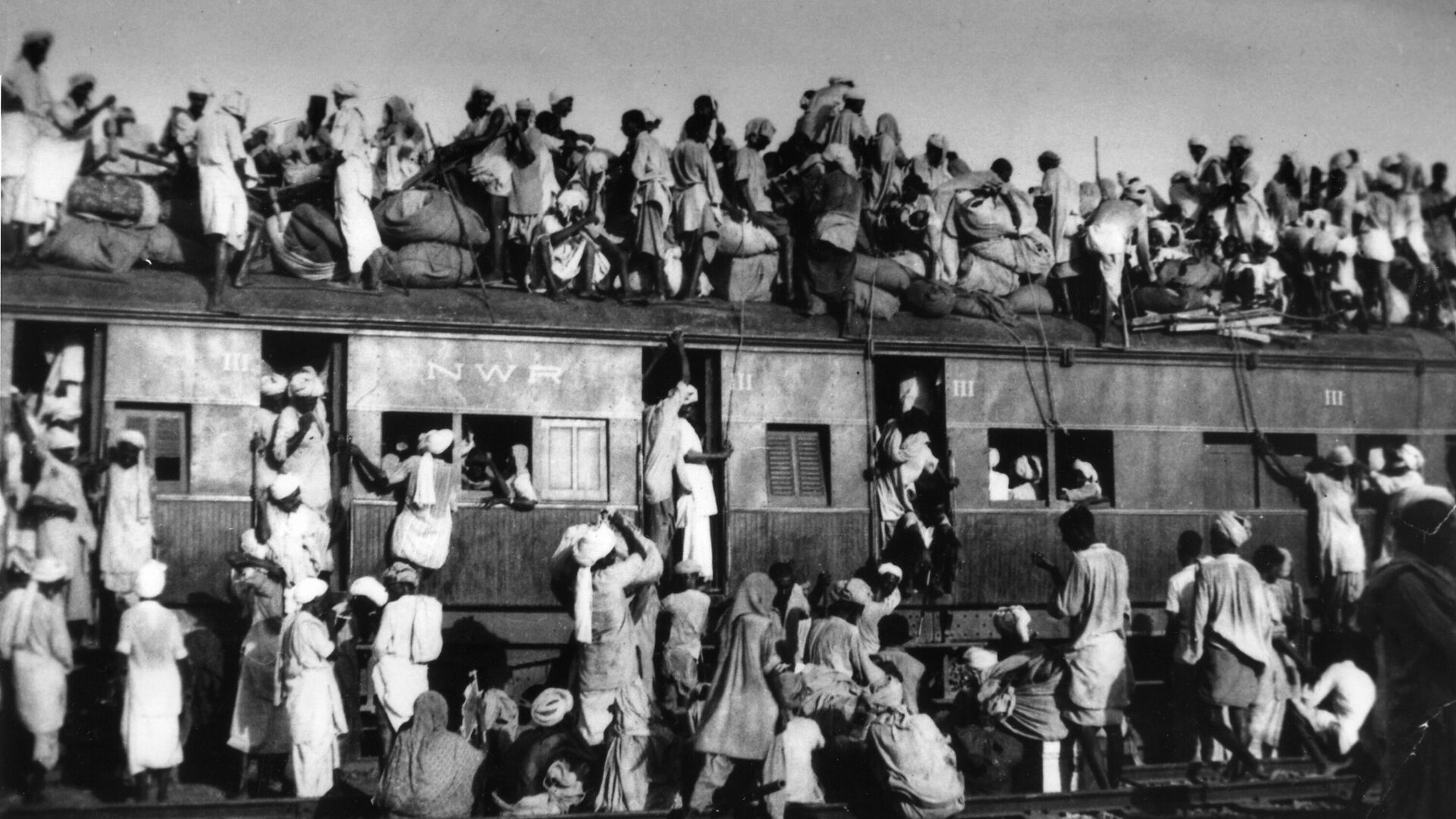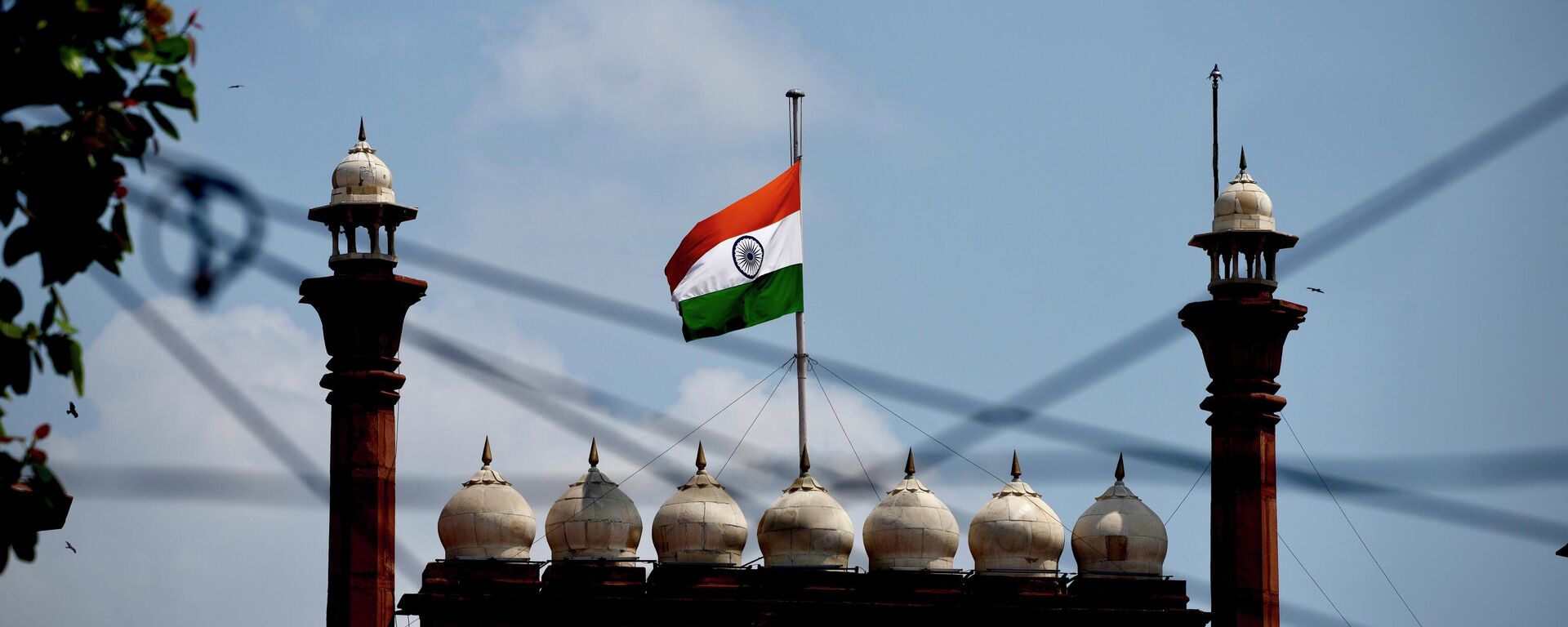https://sputniknews.in/20230815/how-indian-partition-scarred-millions-for-life-3587616.html
How Partition of British India Scarred Millions for Life
How Partition of British India Scarred Millions for Life
Sputnik India
What may today seem to many as not so purposeful revisit down the memory lane, relates to some unheard of heart-wrenching accounts of the blisters picked up during a fateful phase of the Indian Partition.
2023-08-15T17:41+0530
2023-08-15T17:41+0530
2023-08-15T17:51+0530
india
partition of india
government of india
quit india movement (bharat chhodo andolan)
himachal pradesh
punjab
pakistan
india-pakistan war of 1971
new delhi
delhi
https://cdn1.img.sputniknews.in/img/07e7/08/0e/3586658_0:49:3000:1737_1920x0_80_0_0_7c6418b3bcb1bb91e57550cb03151ca4.jpg
As Indians mark their 77th Independence Day on August 15, many families still find it hard to forget the terror of what they experienced during the Indian Partition in 1947.The partition caused large-scale rioting; a million were reportedly killed and 15 million others were displaced. Most of those left with the scars of those harrowing months experienced them as children.Horrors of PartitionInder Jeet Sharma of Delhi was barely eight when British Barrister Cyril Radcliffe, a man with precious little prior knowledge of British India, was tasked with dividing the country of millions into two sovereign states, India and Pakistan. Amid communal tension, a month after the Partition, one day about 30-40 Hindu families from Derawalan Village were shifted to 'Dharamshala', an inn far away. It was an expansive inn with both a Sikh Gurdwara and a Hindu temple in it."The women included my mother and her sisters," he said.After learning about the mayhem which could spark off any moment, the "women quickly decided they'd rather be killed by their own men than taken away by a mob".According to Inder, the moment the decision started being executed, it shook every child and young one out there listening to the screams.“As per the plan, all the women lied on the floor of a big room, adjoining a room especially meant for keeping Shri Guru Granth Sahib (the holy book of Sikhs),” he narrated.All that was being done “to save the women from getting caught by the mob and preventing their modesty from being outraged.”At the same time, many younger women plunged or were pushed into a well, located in that inn. Only two of them, whose turn came last luckily survived, because of the heap floating inside it."These incidents occurred in front of us." But even after years I find it hard to properly put across those horrible scenes through the right frame of words, Inder rued.The SaviorsDays later, all the kids were taken out of that inn to a nearby village by a Muslim good Samaritan. "Mohammed Baksh used to be our agricultural worker. Soon, the news reached a Muslim Nawab, a big landlord and a bitter rival of our landlord father."Following an official announcement, the kids and many of their other relatives reunited at the camp were put into a freight train to reach Attari, 3 km from India-Pakistan border, in the Amritsar district of Indian Punjab.After being stranded for hours in the open train at Attari, we finally reached India, he concluded.Months Before and After Partition – What Made It ‘Bad Dream’Subhash Chhibber was in third grade when his family left Peshawar city, now in Khyber Pakhtunkhwa Province. Their was a Hindu community in the Nanakpura area. But their trouble started in April, months before the partition.“It felt scary when they would start sloganeering before our houses. And it terrified everyone, forcing the residents to close their doors and stay inside.”Subash’s family soon left for Patiala in Punjab in May.His family later moved to the Solan area of Himachal Pradesh state.Asked after 76 years how he remembers those days while today living in the millennium city of Gurugram, he replied: “It was a bad dream.”
https://sputniknews.in/20230814/strategic-consequences-of-partition-of-india-are-far-reaching-modi-3581689.html
india
himachal pradesh
punjab
pakistan
new delhi
delhi
Sputnik India
feedback.hindi@sputniknews.com
+74956456601
MIA „Rossiya Segodnya“
2023
Sandeep Datta
https://cdn1.img.sputniknews.in/img/07e7/04/07/1468069_0:258:1800:2058_100x100_80_0_0_3909870b82375b0693e9fd27915facc3.jpg
Sandeep Datta
https://cdn1.img.sputniknews.in/img/07e7/04/07/1468069_0:258:1800:2058_100x100_80_0_0_3909870b82375b0693e9fd27915facc3.jpg
News
en_IN
Sputnik India
feedback.hindi@sputniknews.com
+74956456601
MIA „Rossiya Segodnya“
Sputnik India
feedback.hindi@sputniknews.com
+74956456601
MIA „Rossiya Segodnya“
Sandeep Datta
https://cdn1.img.sputniknews.in/img/07e7/04/07/1468069_0:258:1800:2058_100x100_80_0_0_3909870b82375b0693e9fd27915facc3.jpg
what happened in the indian partition, history of partition of indiaindian partition, indian partition day, indian partition act 1893, indian partition act 1947, indian partition movies, indian partition literature, indian partition date, british rule in india, british rule period in india, cryril radcliffe partition, cyril john radcliffe , cyril radcliffe line, horrors of parition, partition horrors remembrance day, partition horrors remembrance day slogan, report on partition horrors remembrance day, who was responsible for the partition of india, how many hindu killed in 1947 partition, what were the consequences of the partition of india in 1947, why did partition of india happen, essay on partition of india, causes and effects of partition of india, partition riots, partition riots in punjab, partition riots india, partition riots in bengal, partition riots in delhi, partition riots in lahore, communal riots during partition of india, unheard tales of partition survivors, what happened during partition, how many people were killed in partition, stories of partition survivors, rare stories of partition, what happened in partition riots
what happened in the indian partition, history of partition of indiaindian partition, indian partition day, indian partition act 1893, indian partition act 1947, indian partition movies, indian partition literature, indian partition date, british rule in india, british rule period in india, cryril radcliffe partition, cyril john radcliffe , cyril radcliffe line, horrors of parition, partition horrors remembrance day, partition horrors remembrance day slogan, report on partition horrors remembrance day, who was responsible for the partition of india, how many hindu killed in 1947 partition, what were the consequences of the partition of india in 1947, why did partition of india happen, essay on partition of india, causes and effects of partition of india, partition riots, partition riots in punjab, partition riots india, partition riots in bengal, partition riots in delhi, partition riots in lahore, communal riots during partition of india, unheard tales of partition survivors, what happened during partition, how many people were killed in partition, stories of partition survivors, rare stories of partition, what happened in partition riots
How Partition of British India Scarred Millions for Life
17:41 15.08.2023 (Updated: 17:51 15.08.2023) While the history of India's partition stands in the shadow of the nation's independence celebrations, for some it remains a source of pain generations after the new borders were established.
As Indians mark their 77th Independence Day on August 15, many families still find it hard to forget the terror of what they experienced during the
Indian Partition in 1947.
The partition caused large-scale rioting; a million were reportedly killed and 15 million others were displaced. Most of those left with the scars of those harrowing months experienced them as children.
Inder Jeet Sharma of Delhi was barely eight when
British Barrister Cyril Radcliffe, a man with precious little prior knowledge of British India, was tasked with dividing the country of millions into
two sovereign states, India and Pakistan.
Amid communal tension, a month after the Partition, one day about 30-40 Hindu families from Derawalan Village were shifted to 'Dharamshala', an inn far away. It was an expansive inn with both a Sikh Gurdwara and a Hindu temple in it.
“We had barely spent a few hours settling ourselves when some of our elders got the whiff of the place being surrounded by a Muslim mob. It was desperate to get inside to snatch away our women while killing the rest,” Inder told Sputnik India.
"The women included my mother and her sisters," he said.
After learning about the mayhem which could spark off any moment, the "women quickly decided they'd rather be killed by their own men than taken away by a mob".
According to Inder, the moment the decision started being executed, it
shook every child and young one out there listening to the screams.
“As per the plan, all the women lied on the floor of a big room, adjoining a room especially meant for keeping Shri Guru Granth Sahib (the holy book of Sikhs),” he narrated.
“On listening to the shrieks, all the
kids began crying bitterly. We wished to just get in and be with our mothers...But we were shooed away by (the men), who even threatened to kill us,” Inder said.
All that was being done “to save the women from getting caught by the mob and preventing their modesty from being outraged.”
At the same time, many younger women plunged or were pushed into a well, located in that inn. Only two of them, whose turn came last luckily survived, because of the heap floating inside it.
"These incidents occurred in front of us." But even after years I find it hard to properly put across those horrible scenes through the right frame of words, Inder rued.
Days later, all the kids were taken out of that inn to a nearby village by a
Muslim good Samaritan. "Mohammed Baksh used to be our agricultural worker. Soon, the news reached a Muslim Nawab, a big landlord and a bitter rival of our landlord father."
He vowed to shelter us despite outraging members of his local community. "Nawab Sahib treated us as his own kids, and eventually helped us reach a refugee camp," shared Inder.
Following an official announcement, the kids and many of their other relatives reunited at the camp were put into a freight train to reach Attari, 3 km from India-Pakistan border, in the Amritsar district of Indian Punjab.
After being stranded for hours in the open train at Attari, we finally reached India, he concluded.
Months Before and After Partition – What Made It ‘Bad Dream’
Subhash Chhibber was in third grade when his family left Peshawar city, now in Khyber Pakhtunkhwa Province. Their was a Hindu community in the Nanakpura area. But their trouble started in April, months before the partition.
“It felt scary when they would start sloganeering before our houses. And it terrified everyone, forcing the residents to close their doors and stay inside.”
Subash’s family soon left for Patiala in Punjab in May.
“In Patiala, my Nanaji (maternal grandfather) would regularly visit railway station for months to check if any relative had come,” he told Sputnik India.
His family later moved to the Solan area of Himachal Pradesh state.
Asked after 76 years how he remembers
those days while today living in the millennium city of Gurugram, he replied: “It was a bad dream.”





